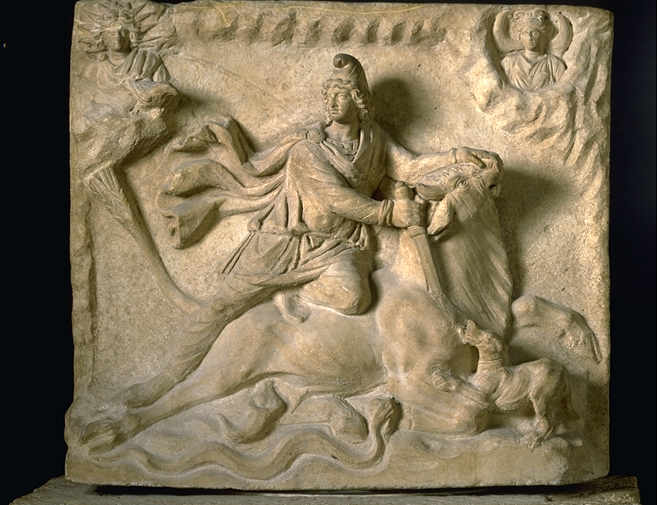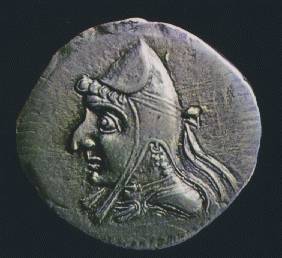
The History of Marianne's Cap
(Paris Observatory)
| Version française |
Historia, N 679, July 2003, page 22.

|
| Mithra, dressed in Persian and wearing the Phrygian cap, sacrifices the primordial bull. From the bull's body were born the plants and animals beneficial to man, in spite of the opposition of the Snake and the Scorpion, agents of the Evil (Collection: Museum of the Louvre, Paris, France). |

| 
|
| Comparison between two effigies: Marianne on a French coin (left) and Mithradates I, emperor of the Iranian Parthian dynasty (c. 171-138 BC). The similarities between the caps are striking. |
Where was Phrygia?
Who Was Mithra?
Christmas, the birth of Mithra
Some references:
![[calvin]](../images/home2.gif) Copyright © 2004 by
M. Heydari-Malayeri
Copyright © 2004 by
M. Heydari-Malayeri
Last update: 02 April 2007
